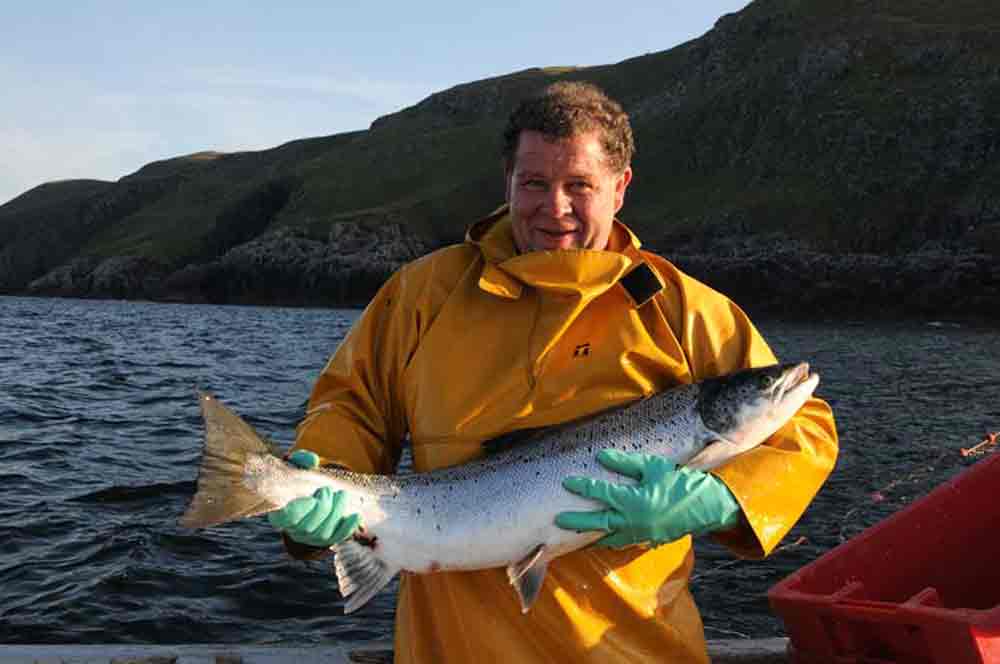Scottish salmon enjoys a global reputation as a premium fish prized for its rich flavor and generous fat content. Chefs and home cooks alike seek out Scottish salmon for its versatility and melt-in-your-mouth texture when cooked properly. However there is a common misconception that this famous salmon hailing from Scotland is wild-caught. The reality is that the vast majority of Scottish salmon on the market today is farmed.
Why Do People Assume Scottish Salmon is Wild?
There are a few reasons why consumers often mistakenly believe Scottish salmon is wild-caught
- Wild fish like salmon like to live in Scotland because it is far away and the water is cold and clean. People assume the salmon comes right from these waters.
- The premium “Scottish Salmon” branding elicits images of wild, free-swimming salmon being netted from the sea.
- Higher prices for Scottish salmon compared to standard farmed Atlantic salmon give the impression it is a premium wild product.
- Lack of awareness about the scale of Scottish salmon farming means many buyers do not realize almost all Scottish salmon is farmed.
The Rise of Scottish Salmon Farming
While Scottish wild salmon populations have dropped significantly, salmon farming has exploded:
- Salmon farming for profit began in Scotland in the late 1960s and has grown a huge amount since then.
- Scotland is now the 3rd largest producer of farmed salmon in the world after Norway and Chile.
- Scottish farmed salmon production reached nearly 200,000 tons in 2020, over 150 times more than wild catches.
- Over 98% of salmon currently labeled as Scottish salmon is farmed.
Finding True Scottish Wild Salmon
While exceedingly rare, it is still possible to source true wild-caught Scottish salmon. Here’s what to look for:
- The labeling should clearly state “wild-caught Scottish salmon” not just “Scottish salmon.”
- It will be caught in limited seasonal quantities, unlike farmed salmon which is available year-round.
- Expect to pay a high premium, often 2-4 times the price of standard farmed Scottish salmon.
- Check for MSC or ASC certification indicating sustainable wild-catch methods.
- High-end restaurants and specialty fishmongers are better sources for limited availability wild Scottish salmon.
How Wild and Farmed Scottish Salmon Compare
Taste – Wild has a richer, more complex flavor. Farmed is still tasty but more muted.
Color – Wild salmon get their color from eating krill and shellfish. Farmed salmon are fed color additives to achieve a similar hue.
Fat Content – Wild typically has a higher fat content, lending a silky mouthfeel. Farmed has a moderately high fat content and smooth texture.
Availability – Wild is seasonal and limited. Farmed is available year-round in abundant quantities.
Price – Wild commands 2-4 times the price per pound of farmed. But farmed still costs more than regular Atlantic salmon.
Sustainability – Wild faces population challenges. But farmed methods are evolving for environmental improvements.
Making the Most of Farmed Scottish Salmon
The bottom line is the majority of recipes calling for Scottish salmon are using farmed salmon. But with proper handling and cooking, farmed Scottish salmon still delivers superb flavor and texture. Here are tips for buying and preparing farmed Scottish salmon:
- Look for reputable, sustainable farms like Loch Duart or The Scottish Salmon Company.
- Check for RSPCA, BAP, or ASC certification indicating responsible farming practices.
- Opt for thicker fillets around 6-8 ounces to get the most buttery texture when cooking.
- Cook thoroughly to between 145°F-160°F internal temperature for food safety.
- Sear skin-on first for crispy skin then finish gently to preserve moisture.
- Lightly cure Scottish salmon before smoking for the perfect texture and flavor.
- Use a nonstick skillet and high smoke point oil to get a lovely crust without overcooking.
So while it may not be plucked straight from the sea, responsible farmed Scottish salmon can still deliver premium quality and flavor for all your salmon recipes. With the right techniques, you can enjoy tender, silky Scottish salmon without the prohibitive cost and limited availability of wild.

Best ways to enjoy Scottish Salmon

With the abundance of salmon available across Scotland, it can be a touch overwhelming. You will find it served in pretty much every possible way imaginable to serve fish. Here we’ve picked out our favourite ways to enjoy it.
Farm Raised Salmon EXPOSED…what you’re actually eating.
FAQ
Is any Scottish salmon wild caught?
What is the difference between wild and Scottish salmon?
Is salmon from Scotland safe to eat?
Which salmon is wild caught?
Can you fish wild salmon in Scotland?
Salmon hatch in the rivers of Scotland and spend most of their lives at sea, only returning to the rivers to reproduce. You can fish for wild salmon during the Summer across the Scottish Highlands. Although licenses to fish wild salmon are quite expensive compared to other fish.
How many wild salmon have been caught in Scotland in 2019?
Salmon caught by anglers in Scottish waters have too seen massive reductions. In 2019, the reported amount of wild salmon was 47,515 – the 4th lowest number recorded. This follows the year before when the lowest ever number of Scottish wild salmon caught was recorded 37,196.
Are all Scottish salmon ‘farmed’?
But look at the small print and you will see that all Scottish salmon is “farmed”. Wild salmon is no longer fished commercially anywhere in the UK. Instead, hundreds of thousands of fish at a time are raised in pens suspended in the open sea lochs around Scotland’s west coast and the Northern Isles.
Why is salmon so popular in Scotland?
Salmon is one of Scotland’s biggest food exports, second only to whiskey. Unfortunately, this booming industry comes with a cost. The salmon we buy across Britain typically comes not from wild fish but farms, many of them located off the coast of Scotland.
